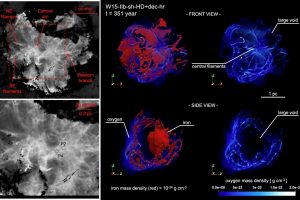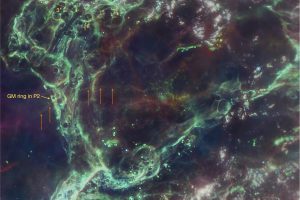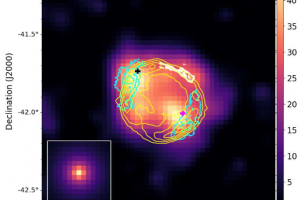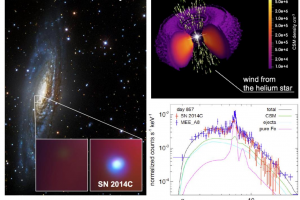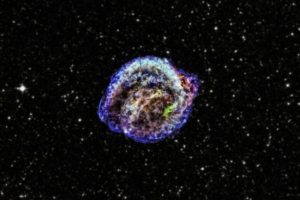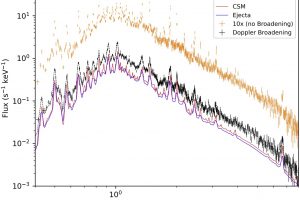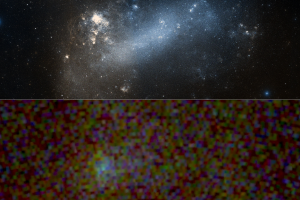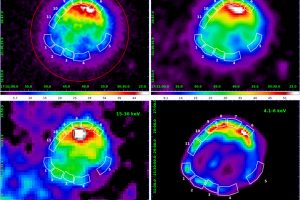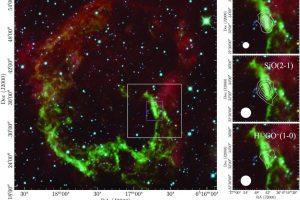A bipolar explosion shaped SN 1987A. The study: “Tracing the ejecta structure of SN 1987A: Insights and diagnostics from 3D MHD simulations” of S. Orlando (INAF – OAPA) appeared on A&A

Theoretical analysis of the properties of the cloud of stellar fragments (i.e., the ejecta) populating the innermost region of the supernova remnant SN 1987A reveals a highly asymmetric explosion, dominated by two bipolar jets. The complex physics governing the core collapse of a massive star and the subsequent supernova explosion can be uncovered through detailed analysis of the physical
» Read more
